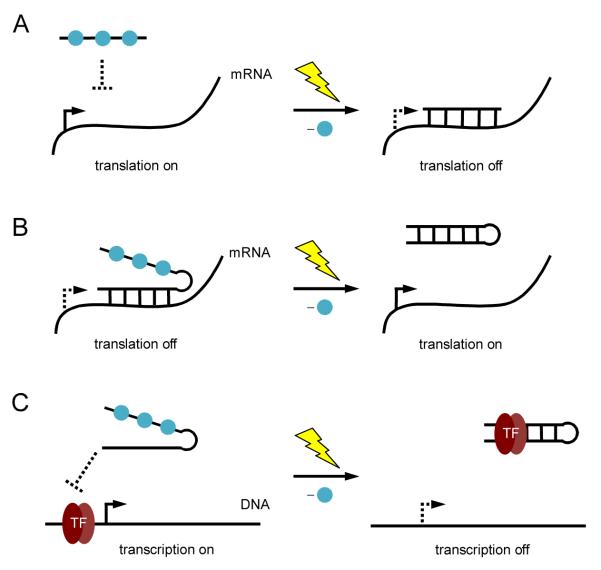Figure 2.
(A) Photochemical activation of gene silencing using a caged antisense agent. Photocaging groups (blue spheres) were placed on the antisense agent to prevent hybridization to its target mRNA. UV irradiation induces decaging and gene silencing. (B) Photochemical deactivation of an antisense agent. Hairpin formation of the antisense agent is disrupted through nucleobase caging, allowing the antisense agent to bind its target mRNA and downregulate translation. After UV irradiation, hairpin formation occurs rendering the antisense agent inactive and activating gene expression. (C) Photochemical control of transcription using a caged DNA decoy. The caged decoy is unable to form a hairpin and does not bind the transcription factor NF-κB. After UV irradiation, the DNA decoy forms a hairpin and is able to bind the transcription factor.

